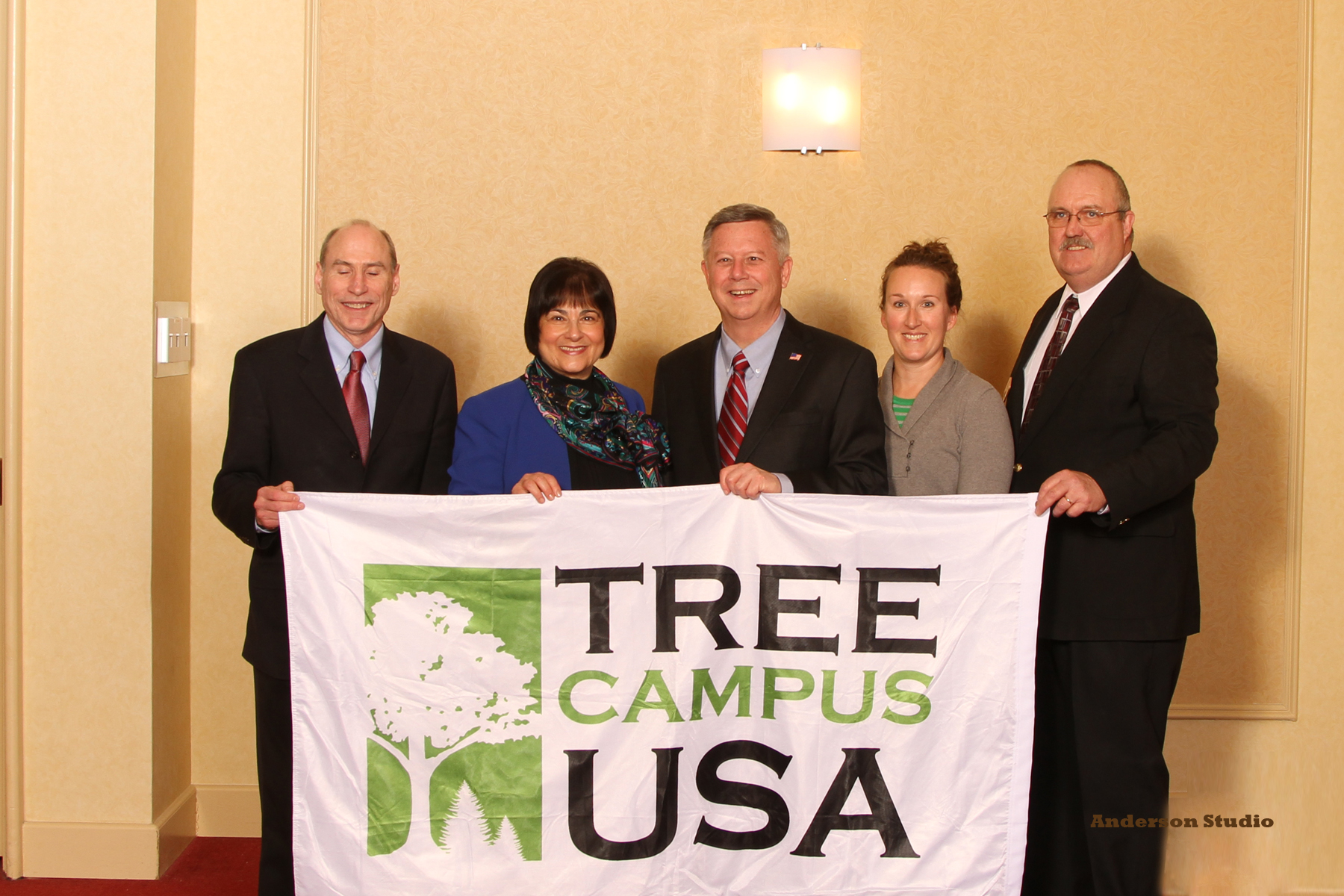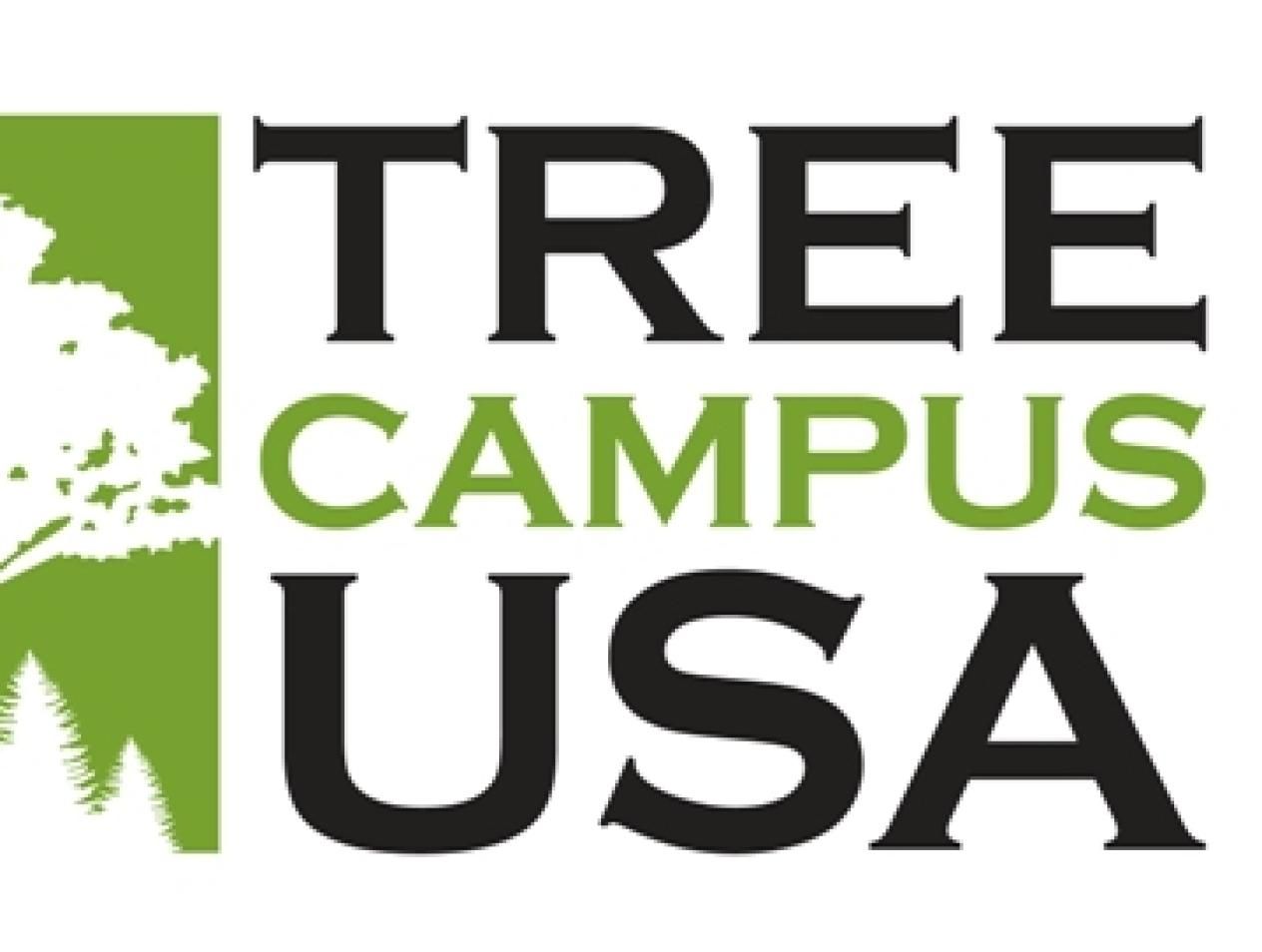Tree Advisory Committee
Creighton University is a Tree Campus USA
A Tree Advisory Committee was established in November 2008, with the first meeting held on December 18, 2008. Regular meetings will be held in February and September of each year, with additional meetings scheduled as needed.
Representatives include:
Mary Ann Vinton, PhD
Creighton University, Professor of Biology and Director of Environmental Science
Andrew G. Baruth, PhD
Creighton University, Director of Office of Sustainability Programs, Professor, College of Arts and Sciences
Ebb Duis
Creighton University, Arborist, Landscape Supervisor
Maverick Helgoth
Creighton University, Climbing Arborist
Justin Evertson
Nebraska Forest Service and Nebraska Statewide Arboretum, University of Nebraska-Lincoln, Green Infrastructure Coordinator
Representatives are expected to:
- provide guidance for future planning, especially as it pertains to the benefit of campus trees to academic programs
- review and make recommendations to the Plan, including the lists of Recommended and Prohibited Trees
- aid in the identification of goals pertaining to species diversity
- aid in the identification of opportunities to enhance community appreciation for and stewardship of campus and community trees
- enhance the relationship between Facilities Management and the greater Creighton community, improving the University?s reputation as a tree steward
- attend to other tree related issues as necessary or requested
Representatives serve for two years with a renewal option at the end of their term. Terms correspond to the calendar year except for faculty and student terms, which correspond to the academic year with optional participation from May to August. Succeeding representatives shall be chosen to maintain the diversity of the committee which shall always include, but not be limited to: the Arborist, the Director of Facilities Management, a Faculty representative, Student representative, and a representative from the larger community.
The Committee held its first annual Campus Tree of the Year contest in 2009. Learn more about this year's winner here.
Tree Campus USA 2012

Jessica Heller, horticulturalist, of Creighton University accepts the Tree Campus USA Award from honorary ReTree Nebraska chair First Lady Sally Ganem, Governor Dave Heineman; Nebraska State Forester Dr. Scott Josiah and Nebraska Community Forestry Council chair Lyle Minshull during the annual Nebraska Community Tree Conference. The April 2, 2013 ceremony was held at the Holiday Inn in Lincoln. The Nebraska Forest Service honored 107 Nebraska communities, seven colleges & universities and four utilities for developing and maintaining a community forestry program. Creighton was honored for its commitment to the management and enhancement of the community tree resource.
Creighton University is a Tree Campus USA

The Arbor Day Foundation has named Creighton University a "Tree Campus USA University" for its dedication to campus forestry management and environmental stewardship.
Tree Campus USA, a new national program launched by the Arbor Day Foundation, honors college and universities and the leaders of the campus and surrounding communities for promoting healthy urban forest management and engaging the campus in environmental stewardship.
Campus Tree of the Year
The Richard Harrington Memorial Tree (Rich’s Tree)
Green Ash
Fraxinus pennsylvanica
For years, an unassuming ash tree has stood quietly in a prominent location on the northwest corner of the Kiewit Fitness Center Lawn. This tree, the Richard Harrington Memorial Tree or Rich’s Tree, was nominated by the family of Lindsay Surdell (CU LAW 2002) and Mark Eichten (CU B.S.B.A. 2000). In Lindsay’s nomination she wrote:
“Rich attended Creighton University in 1995 on a cross country scholarship. He was extremely close to my husband Mark Eichten, graduate of Creighton University in 2000. Rich was filled with life, adventure, and enjoyed every day to fullest. On Easter Sunday of 2000 Rich drowned in the Colorado River. It was a sudden, tragic loss for all of us. His parents, Karen and Jim Harrington, are faith filled devout Catholics whom commemorated Rich's love of life with the tree on the Creighton Campus. Currently his parents reside in Plano, Texas and view the tree through the Creighton University web cam finding comfort, peace, and Rich's spirit surrounding them. This year Rich would be 35 years young. I know it would mean a lot to all who knew him to commemorate this year with the honor of favorite campus tree.”
Rich’s Tree is a species of ash, Fraxinus, a common and adaptable tree in the Nebraska landscape. Two species of ash are native to Nebraska, white ash (Fraxinus americana) and green ash (Fraxinus pennsylvanica). White ash is familiar to many because of its striking fall color, which ranges from orange to reddish-purple, as seen in the popular variety ‘Autumn Purple’. Fall color in green ash ranges from pale yellow to gold. Borers and scale insects can be serious problems for both species, but green ash is less prone than white ash.
In general, ash species prefer moist, well-drained soils in full sun. Native ash trees are typically found in bottom lands and along river banks. In the landscape, ash trees are tolerant of drought, salt spray, and a wide range of soil pH, making them ideal for tough sites. Despite its adaptability, planting ash species has fallen out of favor in recent years with the discovery of Emerald Ash Borer (EAB), a non-native borer that is decimating native and planted ash populations in the upper Midwest. For more information on EAB and ash trees in general, visit www.emeraldashborer.info.
The Harper Mulberry
Morus species

The east end of campus, specifically the area between 17th and 20th Streets, has undergone much change in recent years. Construction has demolished, graded, and rebuilt nearly every square foot of the area. Throughout the development process, this particularly tenacious Mulberry tree has held its ground, defiantly claiming its strip of land between the California Mall and the Harper Center Visitor’s lot.
Many members of the Creighton community hold this tree close to their hearts. Its gently twisted, leaning trunk is said to convey feelings of peace and permanence. Beneath its spreading canopy students participating in fall and spring break service trips capture before and after photos. The tree was said by one nominator to “reflect the maturing process that has occurred within the hearts of those that depart from and return to its roots after their service trips”.
As a genus, Mulberry is a fast-growing, deciduous tree that typically grows 30 to 50 feet tall with a wide-spreading crown. Greenish flowers appear in early spring with male and female flowers on separate trees. Fertilized female flowers produce fruit; trees with only male flowers are non-bearing. The fruit can be eaten off the tree or used in pies, jams, wines, and other food products, but has no commercial value. It also stains pavement, house paint, cars, and even floors if tracked indoors on the bottom of shoes. Leaves are of variable size and shape on the same tree, ranging from lobed to entire with a coarsely serrated edge. Fall color is yellow or a mix of yellow and green.
Although tolerant of heat, drought, pollution, and a wide range of soil types, most people consider Mulberry to have little if any ornamental or landscape value. It readily and extensively naturalizes sites from fields to urban areas and, once established, can be difficult to remove.
The Bio-Information Center Redbud
Eastern Redbud
Cercis canadensis

While Redbud is not an uncommon tree on Creighton’s campus, the best specimen, arguably, is located in a small garden on the southwest corner of the Bio-Information Center. There, surrounded by the brick and asphalt of BIC, Boyne Dental School, and Creighton University Medical Center, it shades a pair of benches and creates a welcome oasis.
Eastern Redbud is one of the first trees to flower when spring arrives in southeast Nebraska, which is the northwestern edge of its native range. Within this range it occurs naturally as an understory tree, often found at the edges of eastern and central hardwood forests where it reaches out from beneath the larger trees for sunlight.
In April small, clustered flower buds open to pink-lavender, pea-like flowers that last two to three weeks. The flowers are unique in that they are sessile, or stemless; attached directly to the stems, branches, and trunk of the tree. The heart-shaped leaves emerge bronze and slowly turn green, and fall color is usually an unimpressive gold or chartreuse. The bark on mature trees is brown-gray with thin exfoliating strips revealing the cinnamon-orange interior bark.
As a landscape tree, Redbud is tolerant of a wide range of site conditions and is not especially vulnerable to insects or diseases. Disease and insect problems include trunk canker, Verticillium wilt, and scale. Beware that, because of its extensive range, the hardiness of Redbud can vary greatly and trees from northern seed stock are best suited for Nebraska landscapes.
The Jesuit Garden Horsechestnuts
Aesculus hippocastanum

Horsechestnut is a tree that, while common in the eastern part of the country, is not widely used in today’s landscape industry. We are fortunate to have four mature specimens on our campus, just north of Creighton Hall in the Jesuit Gardens. These trees have been present for most of the University’s history and can be seen as young trees in Commencement photos from the 1920’s.
One particularly famous Horsechestnut is the Anne Frank Tree in Amsterdam, estimated to be more than 150 years old. It can be seen from the attic of The Annexe, where she and her family hid from the Nazis during World War II, and is mentioned many times in her famous diary, “The Diary of a Young Girl”.
Horsechestnut is native to the mountainous regions of northern Greece and Albania. Flowering in early to mid May, it boasts panicles of flowers that can be 12” long. Creighton’s Horsechestnuts are likely the variety ‘Baumannii’, a sterile and thus fruitless selection that grows 40-50’ high and about half as broad. Foliar diseases are common and include powdery mildew, leaf blotch, and scorch.

